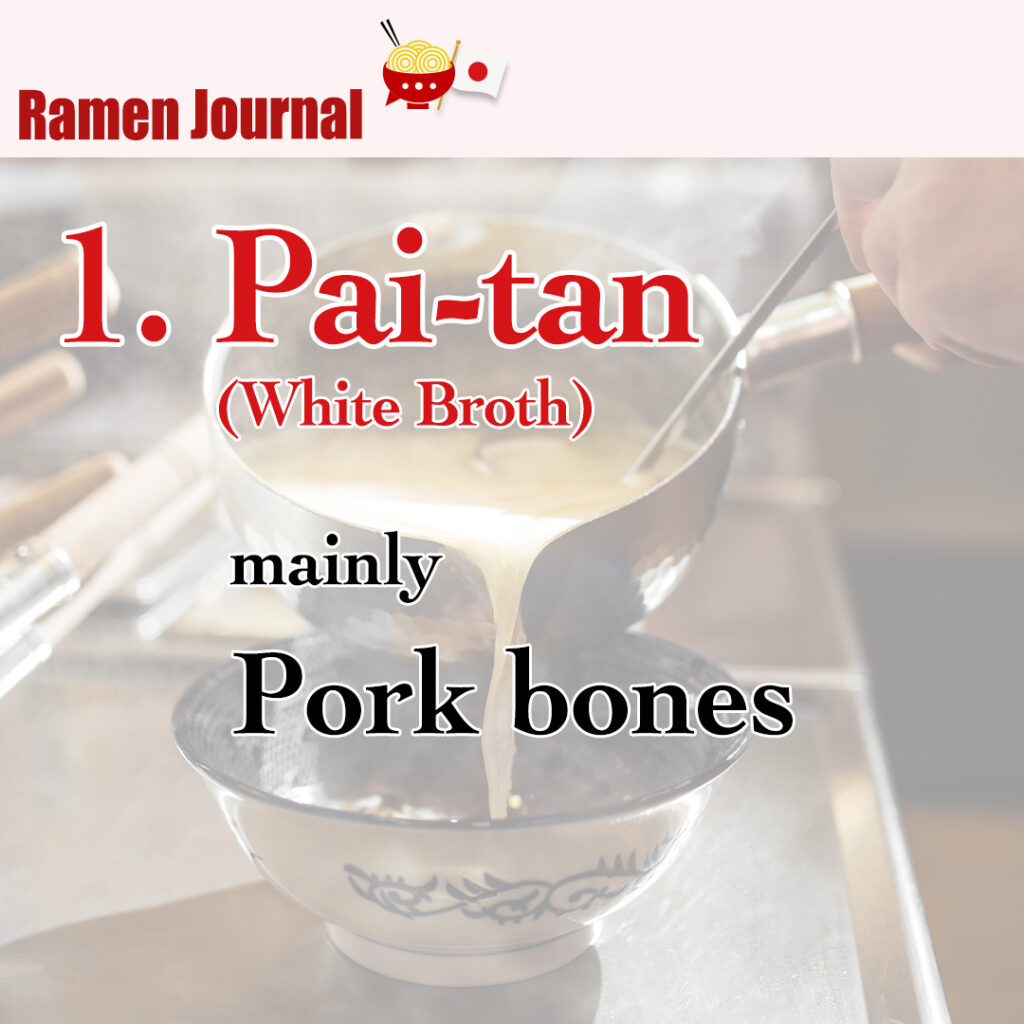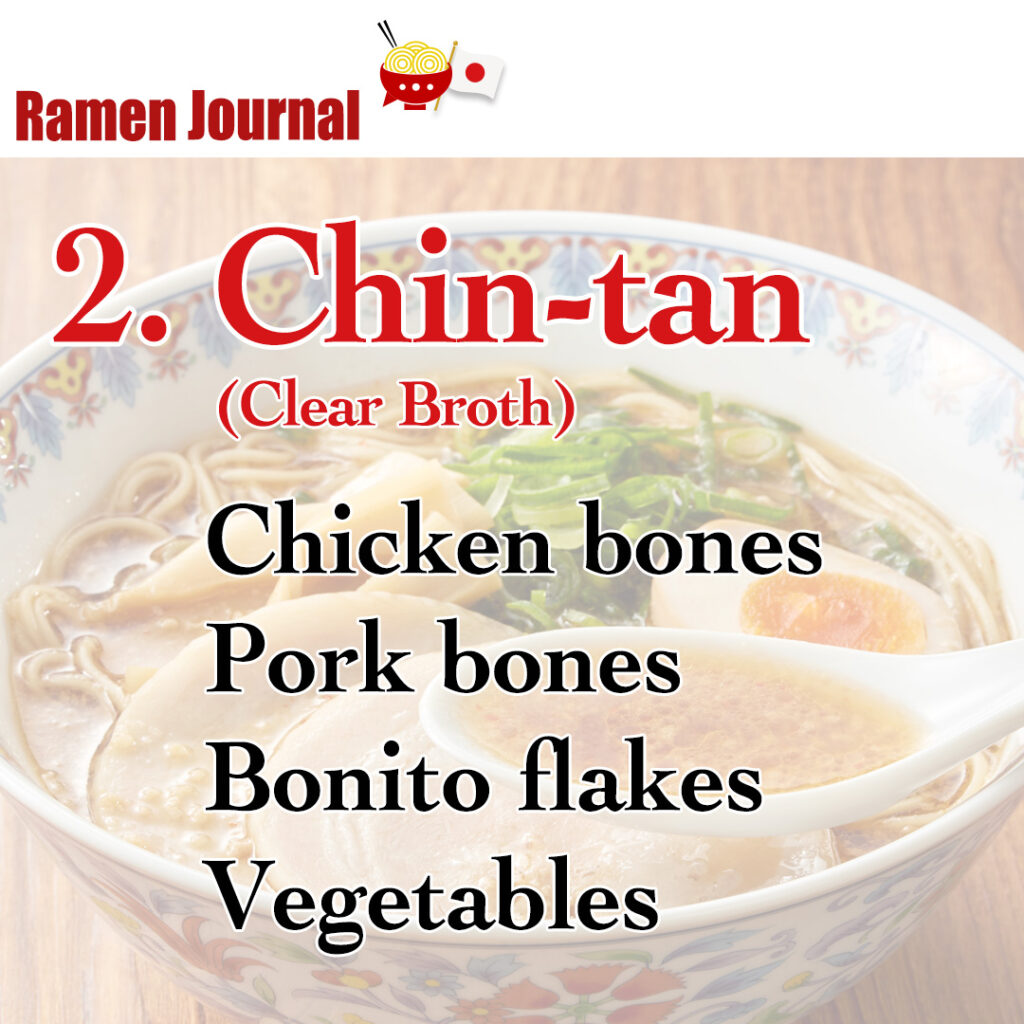When you visit a ramen shop, you’ll see a large pot simmering away. This is where the broth for ramen soup is brewed. The choice of broth greatly affects the overall flavor of the ramen.
There are generally 2 types of broths:
- Pai-tan (White Broth)
- Chin-tan (Clear Broth)
Let’s delve into the differences between these 2 and the ingredients used for each.

Pai-tan (White Broth)

Pai-tan is literally a white broth, not transparent but milky white. It has a rich and robust flavor. Typically made from pork bones, simmered until they break down completely, resulting in a white color and intense taste.
Even within pork bones, there are primarily five types, each yielding different flavors depending on the part:
- Knee Joint Bones
- Rib Bones
- Backbone
- Leg Bones
- Head Bones
By utilizing these characteristics, the combination of bones can distinctly define the soup’s character.
Chin-tan (Clear Broth)

Chin-tan, as the name suggests, is a clear and transparent broth. When preparing Chin-tan, the bones are not boiled until they disintegrate, thus the color remains clear, and the flavor is light. While typically made from chicken bones, pork bones can also be used.
Additionally, ingredients such as bonito flakes or aromatic vegetables like onions, garlic, and ginger might be added.
In summary, a bowl of ramen can be broadly categorized into 2 main types: the robust and powerful “Pai-tan (White Broth)” and the delicately flavored “Chin-tan (Clear Broth).” Of course, there are also ramen varieties that fall in between these 2 extremes.
These descriptions cover one of the three essential elements of ramen soup: “Broth.” When combined with “Sauce” and “Aromatic Oil,” which I’ll introduce later, the variety of ramen soups becomes almost limitless.
